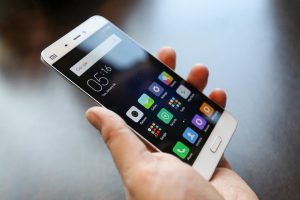Buying a second-hand phone can often feel like getting a hand-me-down, but there are some important benefits to grabbing a pre-owned device. Competitive pricing is probably the most notable benefit of buying a second-hand phone. These days, smartphones can range into the tens of thousands of Rands, so looking at the pre-owned market gives you access to mid-range or top-tier devices at far more affordable prices. In addition to great pricing, there are loads more advantages to buying a second-hand smartphone so once you’ve decided you’re ready to take the plunge and buy a pre-loved device here’s what to look for.
Know what you’re looking for
The trick is to figure out what you’re looking for in a device before you start shopping for a second-hand smartphone. You don’t necessarily have to have a specific model in mind, but it’s a good idea to decide on the minimum specs you are looking for and the type of operating system you would like (Android or iOS?). Other things to consider include what screen size will suit your needs, and how much you can afford to spend. The factors should help you narrow down your choices to a handful of used smartphones.

Wait until the right time
A great way to save money on a second-hand device is to time your purchase cleverly. Waiting until the release of the new iteration of the device you’re interested in hits shelves is a great way to get the device you want at a further reduced price.
Inspect the phone
Whether you are buying your device from an individual or from a well-known dealer, you’ll want to inspect the phone for defects. There are a few things you should check before buying a second-hand phone or refurbished smartphone. Before you turn on the device, give it a visual examination to check for any cracks, dents, or serious scratches to the sides or the screen. Also, check if the front or back camera is cracked or damaged in any way. Next check the microSD slot, headphone jack, charging cable and port, SIM card slot to ensure everything is in working order.

If all looks good up to this point, then remove the back of the phone if that’s an option. Check the battery inside is original and that the other components are in good condition. Put a SIM card and microSD card into the slots and try making a call, sending a text, and connecting to the internet. Next check that the device recognises the microSD and give you access to your files. Check that the ports work as well by plugging in your headphones into the headphone jack and a charging cable in the micro USB port. You can also test the phone’s speaker by playing a song or watching a YouTube video.
The last step in your second-hand phone test is to check the phone’s IMEI number to ensure it’s not stolen and is an authentic device recognised by the manufacturer. Once you’re happy you’ve done a thorough check on your chosen second-hand phone it’s time to negotiate on the price.

Figure out your budget:
Before going to see a device for inspection, it’s important to consider what your budget is. Once you’ve gone to see a device and have done a thorough inspection your last step is to consider the maximum amount you’re willing to pay for that specific handset. If there’s a possibility of negotiating on the price for the device, start by offering the seller a price lower than what you’re willing to pay and then negotiate up to a deal both parties are satisfied with.




